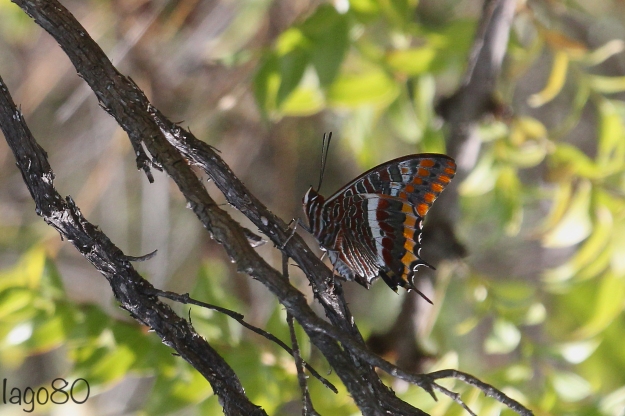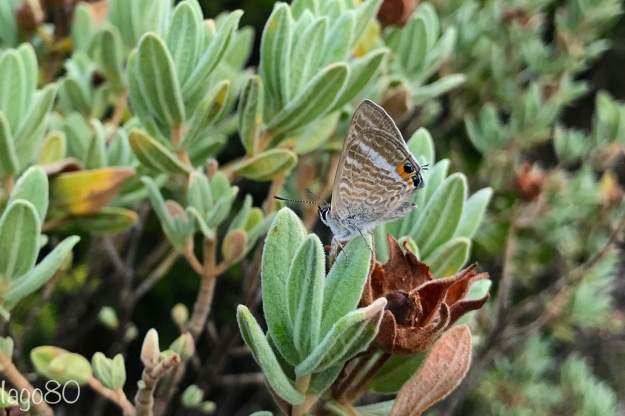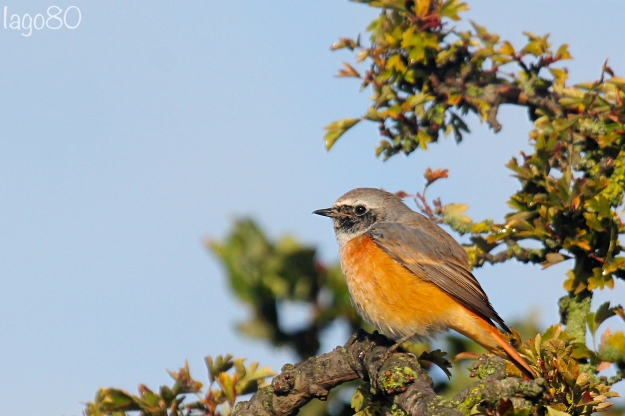The butterflies of my ‘French Patch’, Blanes, have been neglected compared with the birds. I don’t think they mind too much.
Some have, of course, been noticed like the stunning Scarce Swallowtail and the magnificent Two-tailed Pasha.

Two-tailed Pasha (Charaxes jasius)
Watching the huge Charaxes flap around fearlessly, investigating food plants such as the Strawberry tree (Arbutus unedo) is a Mediterranean delight.
Geographical context: The Patch is situated about 40km inland from the Mediterranean, and about 80km North of the Spanish border. The scrubby maquis land ranges from around 300m to 540m above sea level and is just a few flaps of eagle wings away from peaks rising up to almost 3000m.
On my trip this August, there was still plenty on the wing and I figured I ought to pay them a bit more attention. I had flown out from London where I had spent time watching Common Blue and Brown Argus. The French Patch had these two species in abundance as well.

Common Blue (Polyommatus icarus)

Mating Common Blues

Brown Argus (Aricia agestis)
There were other species as well that are very familiar to me back on my London Patch; Small Heath and Meadow Brown for example.

Female Meadow Brown (Maniola jurtina)
But then there are other, seemingly familiar, butterflies that are actually somewhat different. One of the most frequently seen butterflies on the Patch was a Gatekeeper, but not all of them were the Gatekeeper species I commonly see in London. Some were Southern Gatekeeper close to the most Northerly part of their range.

Male Southern Gatekeeper (Pyronia cecilia)
An unusual find on my London Patch is Marbled White. I have only seen one there in fact (last year), but they are believed to be one of the most numerous species in France. However, the one I found a few weeks ago on my French Patch was Iberian Marbled White (a nice life tick for me) which has a range that only snakes into a tiny sliver of the South East of France.

Iberian Marbled White (Melanargia lachesis)
Just as Catalonian culture and language bleed and blend into this ultra rural part of Southern France, so too this Spanish butterfly’s range ignores the political borders of humankind.
Even where my two patches share the same species, sometimes there is noticeable sub-specific variation. This was most apparent with the Speckled Wood: a common butterfly in both London and the Languedoc, but with quite different appearances. The pale yellow/cream of the P.a.tircis form found in the UK, contrasting quite strongly with the orangey colour of the P.a.aegaria nominate form found in France:

Speckled Wood (Parage aegaria aegaria)
A butterfly found in England but not seen in Wanstead is the Grayling; this was abundant in August.

Grayling (Hipparchia semele)
As mentioned above, on this trip I actually paid attention to the butterflies and realised that what I thought were all Graylings, were actually a range of different species: most of them new to me. Ones I managed to identify were Tree Grayling, Striped Grayling, and False Grayling.

False Grayling (Arethusana arethusana)
If a False Grayling were to appear on my Patch it would cause a frenzy of interest from Lepidopterists as only one has ever been recorded in the UK, in Surrey in 1974, with experts still unsure whether it was an errant vagrant from the continent or a bred specimen from a private collection.
Most of the blues seen were Common, but sometimes a large pale ghost-like blue would float past on the grassier parts of the Patch. This was another first for me: Provence Chalkhill Blue at the westernmost part of its narrow range.

Provence Chalk-hill Blue (Lysandra hispana)
Another Blue I was thrilled to find was this gorgeous Long-tailed Blue:

Long-tailed Blue (Lampides boeticus)
I had lazily thought I had been looking at White Admiral until I noticed a blue sheen on these large and, and commonly seen, Nymphalidae. It was actually Southern White Admiral.

Southern White Admiral (Limenitis reducta)
At the other end of the size spectrum are the skippers. I have a feeling there were a few species on the wing, but I only managed to photograph and identify a couple. With open wings, the Silver-spotted Skipper resembles a Large Skipper I am used to at home, but with closed wing the greenish tinge and white studding is very different.

Silver-spotted Skipper (Hesperia comma)
Less classically attractive perhaps, but interesting nonetheless, is another butterfly where the South of France serves as the northernmost part of its range; Southern Marbled Skipper:

Worn Southern Marbled Skipper (Carcharodus boeticus)
Butterflies I saw on this latest trip which I have not yet mentioned were, Wall, Spotted Fritillary, Clouded Yellow, and Wood White, taking my trip count to 23 if you include the butterfly I mention below. Not an enormous count, but respectable for a first real effort. I suspect I shall be far more observant on future trips as I look to build my overall list up and discover what else appears in this hilly, mediterranean, boundary land.
Of course, with so many butterflies around, there are inevitably other creatures which benefit from this, such as this stunning Wasp Spider:

Female Wasp Spider (Argiope bruennichi)
Another yellow and black predator of butterflies is, of course, the Hornet. Watching a huge Two-tailed Pasha flap around in vain on the floor as a hornet repeatedly stung the helpless butterfly and eventually tear off its wings piece by piece while it was still alive was disturbingly brutal to my human sensibilities.
Butterflies are so deeply embedded in our cultural psyche as symbols of hope, change, resurrection, and life itself that it is difficult not feel drawn to them.
A special moment for me was seeing pulses of yellow, green, and orange in flight before, what appeared to be, a Brimstone (a butterfly I have seen before on the Patch) settled with its wings closed (they never settle with open wings). But the orange I had glimpsed in flight was a give away and a slight breeze helped to gently and fractionally open the wings of the resting Pieridae, again revealing the orange blush and instantly identifying it as a Cleopatra.

Cleopatra (Gonepteryx cleopatra)





















